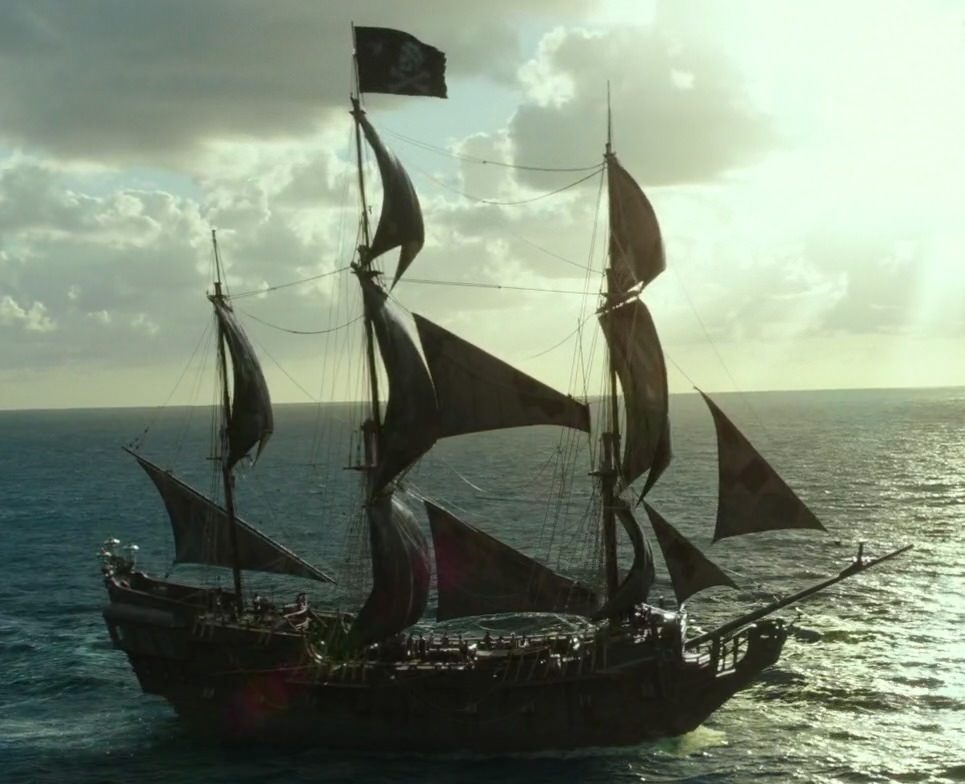In the pantheon of swashbuckling tales that have captivated audiences for generations, “The Curse of the Black Pearl” stands out as a modern classic. Released in 2003, this film is the first installment in the “Pirates of the Caribbean” series, a franchise that has since become synonymous with high-seas adventure, humor, and a touch of the supernatural. Directed by Gore Verbinski and based on a Disney theme park ride of the same name, “The Curse of the Black Pearl” introduced the world to Captain Jack Sparrow, a character that would become an icon of cinema, portrayed with unparalleled charisma by Johnny Depp.
The story unfolds in the early 18th century Caribbean, a time and place rife with piracy, colonial ambition, and the supernatural. The film follows Elizabeth Swann (Keira Knightley) and Will Turner (Orlando Bloom), a young couple whose lives are thrown into turmoil when a cursed pirate ship, the Black Pearl, attacks their home. The ship is captained by the ruthless Hector Barbossa (Geoffrey Rush), who, along with his crew, is searching for the Aztec gold that cursed them, turning them into undead beings. The only way to lift the curse is to return every piece of the gold and the blood of the man who originally stole it: Captain Jack Sparrow.
Enter Johnny Depp’s portrayal of Sparrow, a role that defied expectations and became a defining performance of his career. Depp’s Sparrow is a departure from the traditional pirate archetype, blending elements of Keith Richards’ mannerisms with his own unique flair. Sparrow is equal parts coward and hero, a trickster who often finds himself in situations beyond his control but always manages to come out on top, thanks to his wit and unconventional approach to piracy.
“The Curse of the Black Pearl” is a masterful blend of action, comedy, and fantasy. The film’s success lies not only in its entertaining plot but also in its richly developed characters and the chemistry between its cast. The dynamic between Sparrow, Swann, and Turner is the heart of the film, providing both humor and emotional depth. The film’s special effects, particularly the depiction of the cursed pirates, were groundbreaking at the time and have aged remarkably well, contributing to the film’s timeless appeal.
The film’s setting is as much a character as the people who inhabit it. The Caribbean Sea, with its vast blue waters and hidden coves, serves as the perfect backdrop for pirate adventures. The production design and costume design are meticulous, immersing the audience in the world of pirates, naval officers, and colonial society.
“The Curse of the Black Pearl” was a commercial and critical success, reviving the pirate genre and setting the stage for a series of sequels. It received praise for its originality, performances, and visual effects, earning numerous awards and nominations, including three Academy Awards.
Beyond its entertainment value, “The Curse of the Black Pearl” has had a lasting impact on popular culture. It has inspired a range of merchandise, video games, and theme park attractions, cementing its place in the annals of cinematic history. The film’s legacy is a testament to the enduring appeal of pirate stories and the timeless themes of adventure, romance, and the quest for redemption.
In conclusion, “The Curse of the Black Pearl” is more than just a film; it is a grand adventure that captures the imagination and spirit of piracy in a way that is both fresh and nostalgic. It reminds us of the allure of the unknown, the thrill of the chase, and the power of stories that sail the seas of our collective consciousness.
